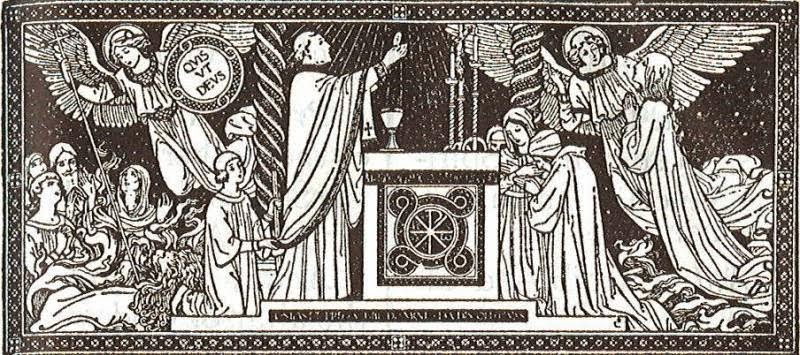Much has been said about Connecticut and I hesitate to add to the mountain of words. I have watched my own parents bury a son, and in the end, there are no words, only - as C.S. Lewis said in “A Grief Observed” - “the red-hot jab of memory”.
But apart from the incalculable pain suffered by those who lost a child or loved one - a pain no explanation will ever assuage, the ensuing culture war over who or what to blame is at once fascinating, repulsive, and perhaps, instructive.
From the Left, there is the predictable war on guns. From the Right there is the attack on a fallen culture and the media which glorifies it. In the middle there is the debate over what to do about the mentally ill. A bit above the fray, amongst religious leaders there are calls for prayer and homiletic revisits to the ancient problem of pain.
Personally, I was tempted to blame the wicked incident on our nation’s mad embrace of the Culture of Death, and initially summed up the shooting with Mother Teresa’s biting condemnation: “If abortion isn’t wrong, nothing is.”
And of course, that’s true. In a nation which chops up children in the womb at the rate of 4000 a day, what’s the big deal over twenty more - other than the fact that they were apparently wanted and could audibly cry as they died?
But abortion is not unique to our time and neither is child slaughter. This past week, only a few days distant from Christmas, we celebrated the Feast of the Holy Innocents and were reminded that children were the first martyrs, and parents, from whose arms they were ripped, have always suffered loss like no other.
The response to the massacre at Sandy Hook from many Catholics was uniquely colored by the fact that the horrific news was revealed as the Church prepared for Gaudete (Rejoice) Sunday, a fact which made for many attempts to liturgically contextualize the tragedy.
My own thought was less about how to reconcile Connecticut with Gaudete, and more about how profoundly the shooting anticipated the Feast of the Holy Innocents wherein we once again hear the Jeremiah-an lament: “A cry is heard in Ramah, sobbing and loud lamentation; Rachel weeping for her children, and she would not be consoled, since they were no more.”
Meanwhile, in the news, the battle raged: gun control, mental illness, the desensitizing impact of relentless media violence, the shooter’s broken home, survivalist mother, and absent father, the need for better school security and greater community vigilance, and so on.
There is much to say about each of these, but in the midst of a lemming-like rush to “get the government to do something”, we need remind ourselves that the greatest threat to human life is not madmen, but sane men. In the 20th century, “death by government” (democide), surpassed war as the number one cause of non-natural death.
There are the usual suspects: Hitler (10 million), Stalin (62 million), Chang Kai-shek and Mao (50 million). But there are also 204 other documented cases in the 20th century of genocide, politicide, massacres, extrajudicial executions, and other forms of systematic democidal murder perpetrated by state and quasi-state regimes upon their own peoples.
It is important to recall that each of these monsters began, not as monsters, but as social reformers, as promisers of jobs and a “chicken in every pot”: the Thousand Year Reich (Hitler), the Five Year Plan (Stalin), and the Cultural Revolution (Mao).
Their eventual purges were not motivated by the bloodlust of madmen, but, like Herod, by seemingly sane political policies which necessitated the elimination of opposition and undesirables as an inevitable step in the march to their imagined utopias.
It is also important to recall that prior to the mechanized slaughter of its own citizenry, each seemingly sane government instituted a seemingly sane policy to disarm its citizens, and for good reason. As Mao said: “All political power comes from the barrel of a gun.”
One would think that with the brazen attack on the First Amendment by our current government, religious leaders would be wary of ceding even more constitutional ground by caving on the Second. However, the USCCB, in joining the clamor for gun control, has done exactly that.
But gun control aside, there is the more ominous question of the wisdom of granting ever more power to a government which has already shown that it is willing to crush religious freedom and rule by diktat.
Before inviting more governmental control of guns, health care, or anything else, the USCCB, and religious leaders in general, may want to recall that increasingly centralized and empowered governments eventually turn on their own people, beginning with religious leaders.










